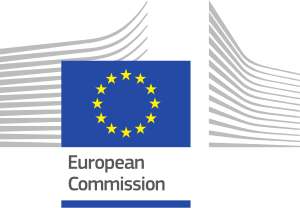EUnetHTA PLEG Activities
Definition of Post Launch Evidence Generation (PLEG)
When a new technology is evaluated and marketed, there may be uncertainty about its short or long-term consequences as it becomes available to more patients than in clinical trials.
PLEG is an umbrella term for evidence generated after the launch or licensure of a health technology within its approved or intended indication.
Its role is not to replace but to complement evidence generation already undertaken for marketing authorisation or HTA appraisal, addressing remaining uncertainties but also potentially covering wider questions of disease management and healthcare delivery.
PLEG contributes to the overall and accumulating evidence about a health technology during the life-cycle.
Joint HTA PLEG activities: EUnetHTA PLEG pilots
EUnetHTA is currently conducting two types of collaboration on PLEG:
- PRODUCT-SPECIFIC PLEG PILOTS ARISING FROM HTA
- REGISTRY-SPECIFIC PLEG PILOTS.
Any PLEG pilot must fulfil EUnetHTA Selection-prioritisation criteria for PLEG.
Moreover, the pilots follow general EUneHTA PLEG guidance and EUnetHTA registry quality standards (REQueST tool).
For further information on EUnetHTA PLEG pilots, please contact eunethta-has@has-sante.fr
1) PRODUCT-SPECIFIC PLEG PILOTS ARISING FROM HTA
Product-specific PLEG pilots can arise from evidence gaps identified either in national assessments of EUnetHTA partners, or directly in EUnetHTA assessments.
The pilots consist in agreeing, among participating agencies, on the common requirements for PLEG (common minimum data set, quality requirements) for a specific product, to inform its re-assessment. The jointly defined requirements are used as a basis to set up PLEG at the national level.
Whenever possible, pilots also have a second phase, which consists in compiling and analysing the generated data from different jurisdictions.
EUnetHTA JA3 product-specific PLEG pilots
Name of the product | Indication | Agencies involved | Reports* | ||
|---|---|---|---|---|---|
Spinraza | Spinal muscular atrophy | AIFA (pilot lead), AAZ, FIMEA, INFARMED, NOMA, ZIN. | Evidence gaps report. | Minimum data set report. | |
Ibrance | Breast cancer | TLV (pilot lead), INFARMED, NIPN, NOMA. UCSC (observer) | Evidence gaps report. | ||
Left ventricular Assist Devices | End-stage heart failure | Avalia-t (pilot lead), NICE, Agenas**, KCE** | Evidence gaps report. | Minimum data set report. |
* First reports (first phase): common evidence gaps report ; minimum data set report. Second report (second phase) : final report with compiled data.
** Agencies participating only in the first phase.
2) REGISTRY-SPECIFIC PLEG PILOTS
Registry-specific pilots consist of assessing the suitability of existing data sources (registries) for PLEG purposes, in terms of variables collected and the quality of data collection. Since 2019, the latter is being assessed with the help of the REQueST tool.
The pilot report contains non-binding recommendations from participating agencies on the discussed aspects (variables collected, data quality).
EUnetHTA JA3 registry-specific PLEG pilots
Name of the registry | Indication | Agencies involved | Report |
|---|---|---|---|
ECFSPR* | Cystic fibrosis | AQUAS, HAS, INFARMED, ZIN. Observers: AEMPS, AIFA, G-BA, NICE. | Summary of HTA recommendations |
EBMT | CAR-T products (B-cell acute lymphoblastic leukaemia (ALL), Diffuse large B-cell lymphoma (DLBCL), primary mediastinal large B-cell lymphoma (PMBCL)) | Avalia-t, AIFA, G-BA, HAS, INFARMED, NICE, NOMA, ZIN. Observer: SNHTA | Summary of HTA recommendations |
* Pilot performed in collaboration with the EMA.
Recommendations
The following report has been developed to outline recommendations for PLEG, going forward, based on JA3 learnings:

